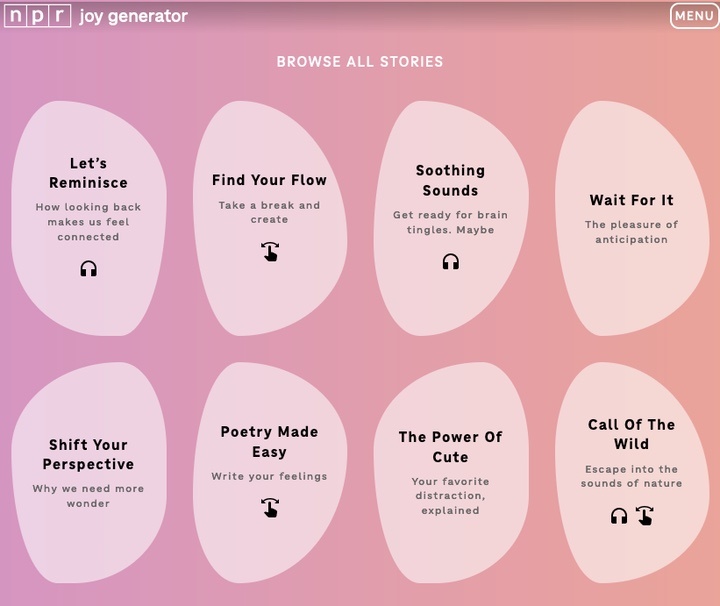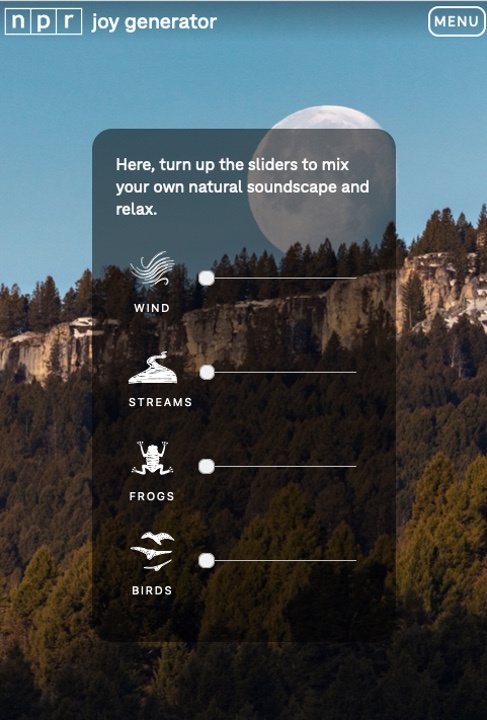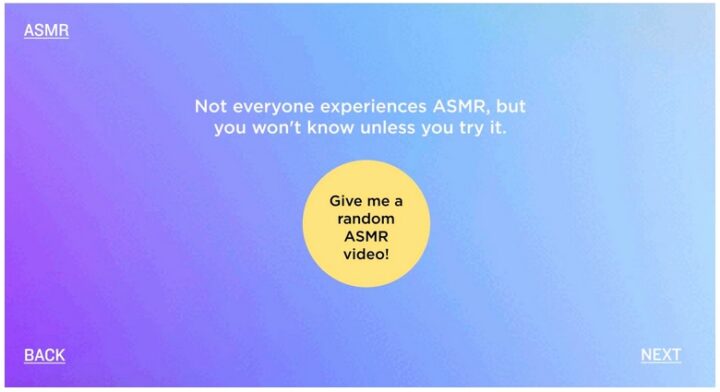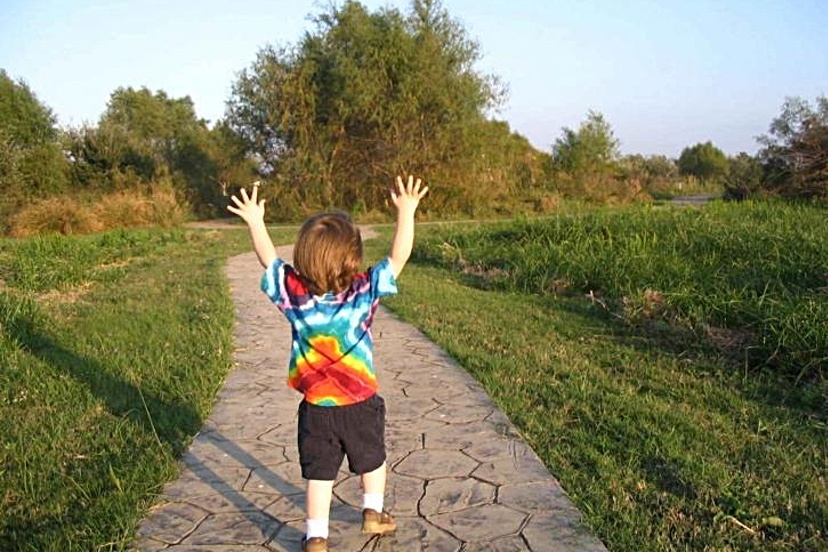Feeling blah? Science shows you can boost happiness by taking time for small moments of delight. We’ve got ideas to try out right now. So let’s play!…
— from the NPR.org “Joy Generator” website
I honestly didn’t think science was much interested in happiness, and particularly, in small moments of delight. The scientists I know are more interested in depressing things like global warming and the degradation of the biosphere. Things like that.
Also, viruses. And PTSD. And Artificial Intelligence.
Apparently, back in 2020, some scientists and web designers thought we needed more joy in our lives. Didn’t we all feel that way?
They got together with NPR.org and created, scientifically, an online “Joy Generator”.
Working with the Science desk, we built the Joy Generator to do two things: Teach users about the science of happiness, but also bring them a little burst of good feeling in a pretty grim year…
The “pretty grim year” being 2020. These folks thought it would be a good idea to teach us about the science of happiness, that year.
And provide a burst of good feeling.
We all remember December 2020, when people all around the world were landing in hospitals, as the ‘Delta Variant’ spread like a viral social media post. Joy was seemingly in short supply. Enter, the NPR scientists.

Apparently, pink is a joyful color? I sort of thought ‘yellow’ was the color of joy. But I’m not a scientist.
And there are (at least) eight different ways to generate joy on a website. (Obviously, other ways exist to generate joy, but may not be suitable for a family-friendly website.)
I was surprised that “Poetry” made the cut. But once again, I am not a scientist. And after all, this is NPR.
The “Call of the Wild” selection immersed me in certain ‘sounds of nature’ that scientists find attractive and soothing. The sounds of Yellowstone Park geysers were surprisingly prominent, for whatever reason.
One page allowed you to mix four different scientifically-pleasing sounds to suit your own tastes. (Without the geysers, thank you.)

Unfortunately, I didn’t find out about the NPR “Joy Generator” until last week. Meaning that I could have been a lot happier these past couple of years, and could have known more about the Science of Joy, if I had been paying more attention to NPR.
But better late than never. COVID may have mostly come and gone, but the “grim” years have continued unabated. Joy is always welcome in my house.
Here’s a mockup slide from the NPR scientists and web designers, from December 2020.

As I understand it, small moments of joy are sometimes classified (by scientists) as ASMR. Autonomous Sensory Meridian Response. For some people, certain soft sounds — whispering, soft rattling noises, unfolding a crumpled piece of paper, wind through leafy trees — causes a tingling sensation. (Turns out, I’m one of those people. Who knew?)
From Wikipedia, (apparently written by scientists):
An autonomous sensory meridian response (ASMR) is a tingling sensation that usually begins on the scalp and moves down the back of the neck and upper spine. A pleasant form of paresthesia, it has been compared with auditory-tactile synesthesia, and may overlap with frisson.[8] ASMR is a subjective experience of “low-grade euphoria” characterized by “a combination of positive feelings and a distinct static-like tingling sensation on the skin”. It is most commonly triggered by specific auditory or visual stimuli, and less commonly by intentional attention control…
Many differentiate between the euphoric, relaxing nature of ASMR and sexual arousal. However, the argument for sexual arousal persists, and some proponents have published videos categorized as “ASMRotica” (ASMR erotica), which are deliberately designed to be sexually stimulating. Early proponents of ASMR concluded that the phenomenon was generally unrelated to sexual arousal.
The scientists at NPR are not interested in the erotic possibilities of ASMR, to judge from their website. They’re more into crumpled paper.
Other people have embraced the possibilities of whisper-induced ASMR. One such person is a YouTube celebrity by the name of ASMR Darling.
Her most intriguing posting is a 38-minute video in which she counts down from 1,000 in a whisper.
(“Most intriguing”, in my personal opinion. I have no idea how the NPR scientists feel about it.)
I admit, I got a tingling sensation, right off the bat
And I’m pretty sure I was smiling for the rest of the day.
Underrated writer Louis Cannon grew up in the vast American West, although his ex-wife, given the slightest opportunity, will deny that he ever grew up at all. You can read more stories on his Substack account.

